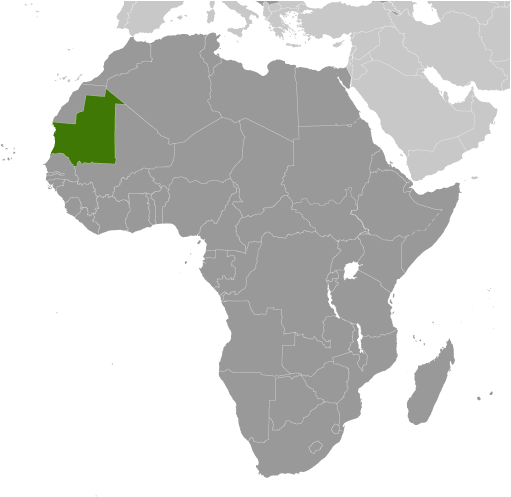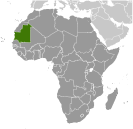
|
|
Advertisements:
EconomyEconomy - overview
Half the population still depends on agriculture and livestock for a livelihood, even though many of the nomads and subsistence farmers were forced into the cities by recurrent droughts in the 1970s and 1980s. Mauritania has extensive deposits of iron ore, which account for nearly 40% of total exports. The nation's coastal waters are among the richest fishing areas in the world but overexploitation by foreigners threatens this key source of revenue. The country''s first deepwater port opened near Nouakchott in 1986. Before 2000, drought and economic mismanagement resulted in a buildup of foreign debt. In February 2000, Mauritania qualified for debt relief under the Heavily Indebted Poor Countries (HIPC) initiative and nearly all of its foreign debt has since been forgiven. A new investment code approved in December 2001 improved the opportunities for direct foreign investment. Mauritania and the IMF agreed to a three-year Poverty Reduction and Growth Facility (PRGF) arrangement in 2006. Mauritania made satisfactory progress, but the IMF, World Bank, and other international actors suspended assistance and investment in Mauritania after the August 2008 coup. Since the presidential election in July 2009, donors have resumed assistance. Oil prospects, while initially promising, have largely failed to materialize, and the government has placed a priority on attracting private investment to spur economic growth. The Government also emphasizes reduction of poverty, improvement of health and education, and privatization of the economy. Economic growth remained above 5% in 2010-11, mostly because of rising prices of gold, copper, iron ore, and oil. Gdp (purchasing power parity) World Ranking: 155
$7.184 billion (2011 est.)
$6.932 billion (2010 est.) $6.597 billion (2009 est.) Note Data are in 2011 US dollars Gdp (official exchange rate)
$4.2 billion (2011 est.)
Gdp - real growth rate World Ranking: 106
3.6% (2011 est.)
5.1% (2010 est.) -1.2% (2009 est.) Gdp - per capita (ppp) World Ranking: 187
$2,200 (2011 est.)
$2,200 (2010 est.) $2,100 (2009 est.) Note Data are in 2011 US dollars Gdp - composition by sector
Agriculture 17.8%
Industry 37.6% Services 44.7% (2011 est.) Labor force World Ranking: 133
1.318 million (2007)
Labor force - by occupation
Agriculture 50%
Industry 10% Services 40% (2001 est.) Unemployment rate World Ranking: 179
30% (2008 est.)
20% (2004 est.) Population below poverty line
40% (2004 est.)
Household income or consumption by percentage share
Lowest 10% 2.5%
Highest 10% 29.5% (2000) Distribution of family income - gini index World Ranking: 69
39 (2000)
37.3 (1995) Budget
Revenues $1.37 billion
Expenditures $1.423 billion (2011 est.) Taxes and other revenues World Ranking: 78
32.6% of GDP (2011 est.)
Budget surplus (+) or deficit (-) World Ranking: 68
-1.3% of GDP (2011 est.)
Inflation rate (consumer prices) World Ranking: 160
7.5% (2011 est.)
6.3% (2010 est.) Central bank discount rate World Ranking: 18
9% (31 December 2009 est.)
12% (31 December 2007) Commercial bank prime lending rate World Ranking: 30
17% (31 December 2011 est.)
17% (31 December 2010 est.) Stock of domestic credit World Ranking: 134
$2.148 billion (31 December 2011 est.) $1.718 billion (31 December 2010 est.) Market value of publicly traded shares
$NA
Agriculture - products
Dates, millet, sorghum, rice, corn; cattle, sheep Industries
Fish processing, oil production, mining (iron ore, gold, and copper) Note Gypsum deposits have never been exploited Industrial production growth rate World Ranking: 121
2% (2000 est.)
Electricity - production World Ranking: 156
547 million kWh (2008 est.)
Electricity - consumption World Ranking: 164
508.7 million kWh (2008 est.)
Electricity - exports
0 kWh (2009 est.)
Electricity - imports
0 kWh (2009 est.)
Oil - production World Ranking: 83
11,640 bbl/day (2010 est.)
Oil - consumption World Ranking: 126
20,000 bbl/day (2010 est.)
Oil - exports World Ranking: 93
10,000 bbl/day (2009 est.)
Oil - imports World Ranking: 118
17,750 bbl/day (2009 est.)
Oil - proved reserves World Ranking: 70
100 million bbl (1 January 2011 est.) Natural gas - production World Ranking: 99
0 cu m (2009 est.)
Natural gas - consumption World Ranking: 204
0 cu m (2009 est.)
Natural gas - exports World Ranking: 143
0 cu m (2009 est.)
Natural gas - imports World Ranking: 94
0 cu m (2009 est.)
Natural gas - proved reserves World Ranking: 74
28.32 billion cu m (1 January 2011 est.) Current account balance World Ranking: 108
-$549.4 million (2011 est.)
-$471.4 million (2010 est.) Exports World Ranking: 125
$2.799 billion (2011 est.)
$2.041 billion (2010 est.) Exports - commodities
Iron ore, fish and fish products, gold, copper, petroleum Exports - partners
China 46.6%, Italy 8.8%, France 8.1%, Cote dIvoire 5.1%, Spain 4.6%, Japan 4.5%, Belgium 4.3%, Netherlands 4% (2011) Imports World Ranking: 148
$2.854 billion (2011 est.)
$2.038 billion (2010 est.) Imports - commodities
Machinery and equipment, petroleum products, capital goods, foodstuffs, consumer goods Imports - partners
China 12.6%, Netherlands 9.1%, France 8.8%, US 7.9%, Spain 5.9%, Germany 5.5%, Brazil 5.2%, Belgium 4.4% (2011) Debt - external World Ranking: 135
$2.816 billion (31 December 2011 est.) $2.351 billion (31 December 2010 est.) Exchange rates
Ouguiyas (MRO) per US dollar -
281.12 (2011 est.) 275.89 (2010 est.) 262.4 (2009) 238.2 (2008) 258.6 (2007) Fiscal year
Calendar year
Comments
Add a new comment: |
Advertisement
Members area
Mauritania (Nouakchott):
 
GPS points from Mauritania (Nouakchott)
|
||||||||

 Independent from France in 1960, Mauritania annexed the southern third of the former Spanish Sahara (now Western Sahara) in 1976 but relinquished it after three years of raids by the Polisario guerrilla front seeking independence for the territory. Maaouya Ould Sid Ahmed TAYA seized power in a coup in 1984 and ruled Mauritania with a heavy hand for more than two decades. A series of presidential elections that he held were widely seen as flawed. A bloodless coup in August 2005 deposed President TAYA and ushered in a military council that oversaw a transition to democratic rule. Independent candidate Sidi Ould Cheikh ABDALLAHI was inaugurated in April 2007 as Mauritania's first freely and fairly elected president. His term ended prematurely in August 2008 when a military junta led by General Mohamed Ould Abdel AZIZ deposed him and ushered in a military council government. AZIZ was subsequently elected president in July 2009 and sworn in the following month. The country continues to experience ethnic tensions among its black population (Afro-Mauritanians) and white and black Moor (Arab-Berber) communities, and is having to confront a growing terrorism threat by al-Qa'ida in the Islamic Maghreb (AQIM).
Independent from France in 1960, Mauritania annexed the southern third of the former Spanish Sahara (now Western Sahara) in 1976 but relinquished it after three years of raids by the Polisario guerrilla front seeking independence for the territory. Maaouya Ould Sid Ahmed TAYA seized power in a coup in 1984 and ruled Mauritania with a heavy hand for more than two decades. A series of presidential elections that he held were widely seen as flawed. A bloodless coup in August 2005 deposed President TAYA and ushered in a military council that oversaw a transition to democratic rule. Independent candidate Sidi Ould Cheikh ABDALLAHI was inaugurated in April 2007 as Mauritania's first freely and fairly elected president. His term ended prematurely in August 2008 when a military junta led by General Mohamed Ould Abdel AZIZ deposed him and ushered in a military council government. AZIZ was subsequently elected president in July 2009 and sworn in the following month. The country continues to experience ethnic tensions among its black population (Afro-Mauritanians) and white and black Moor (Arab-Berber) communities, and is having to confront a growing terrorism threat by al-Qa'ida in the Islamic Maghreb (AQIM).